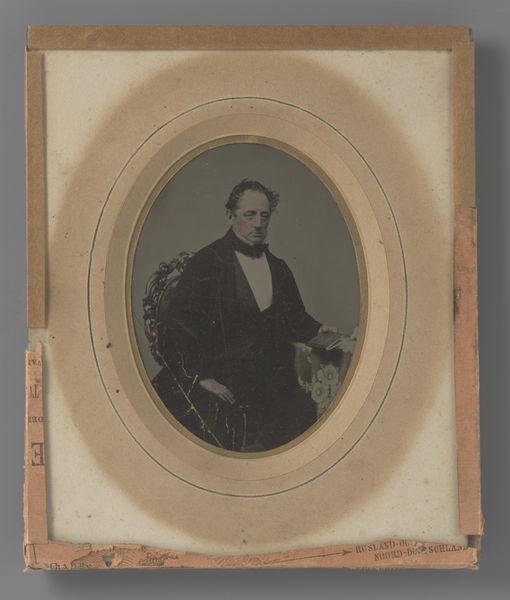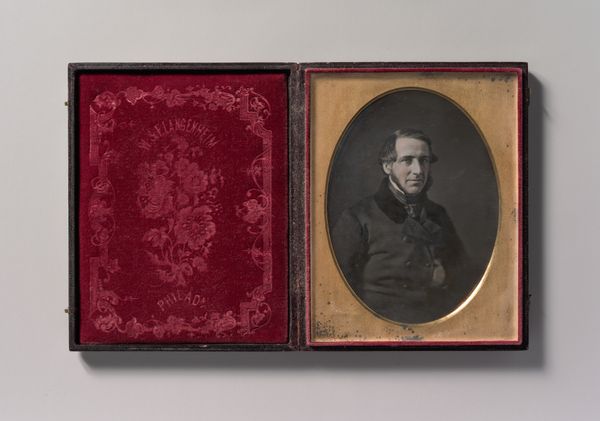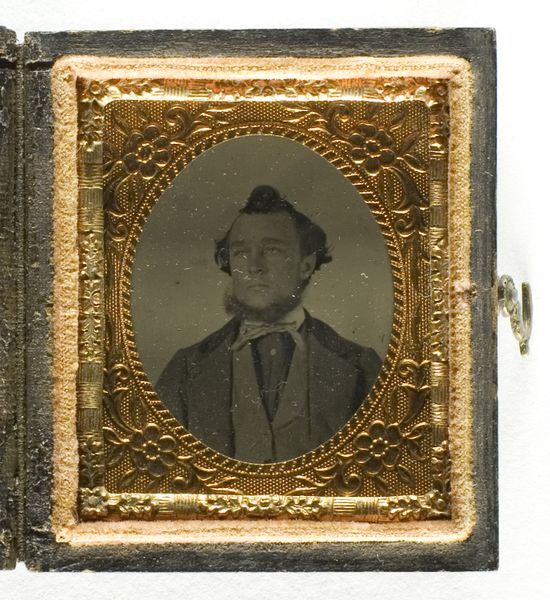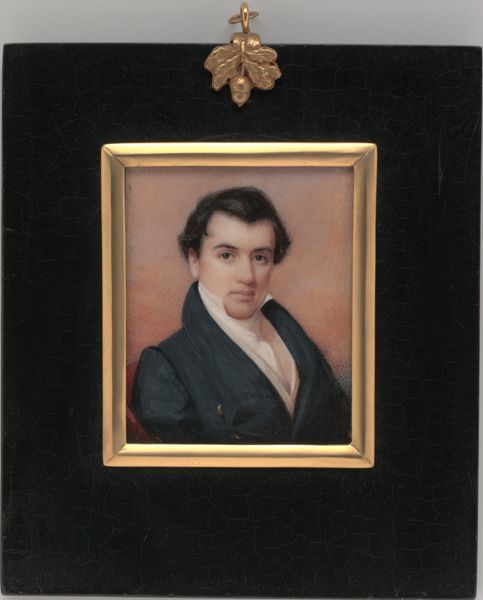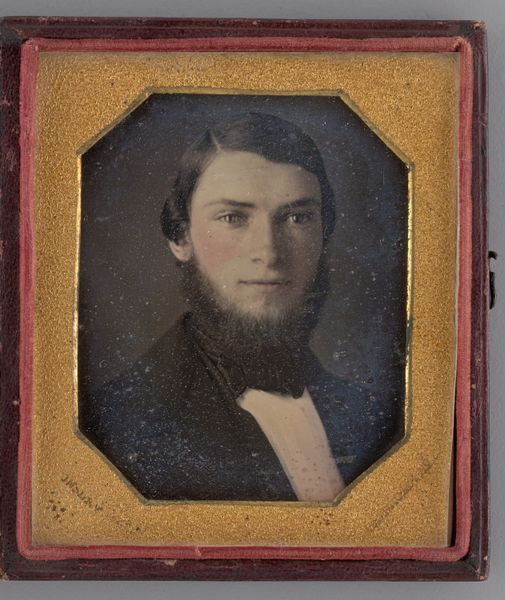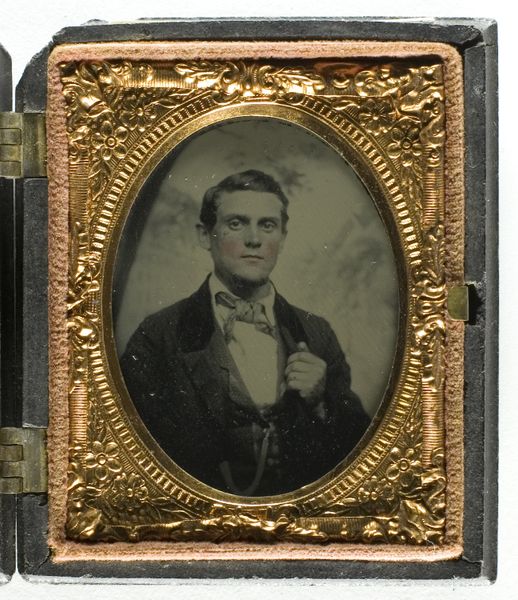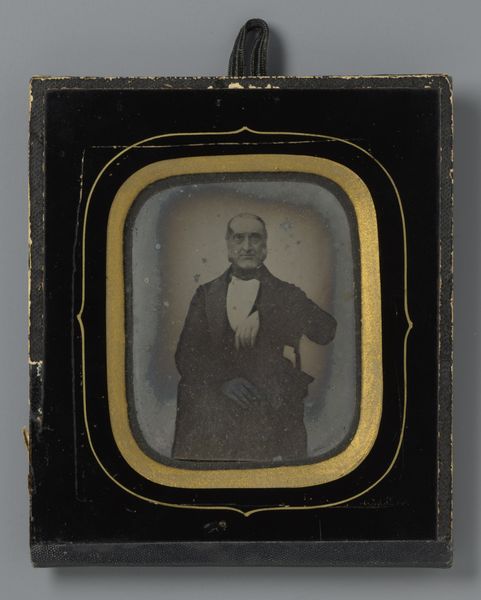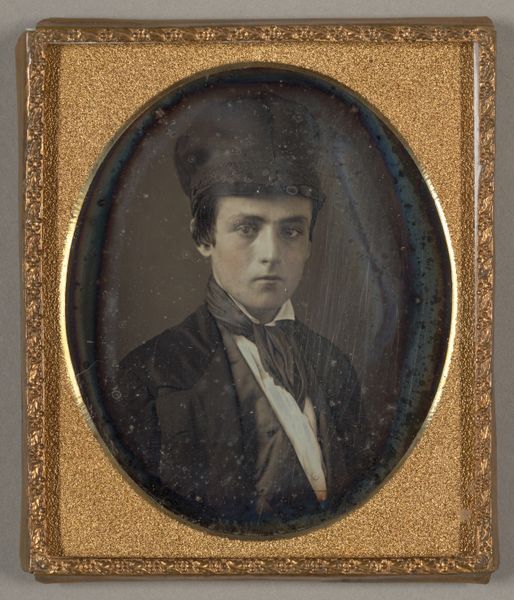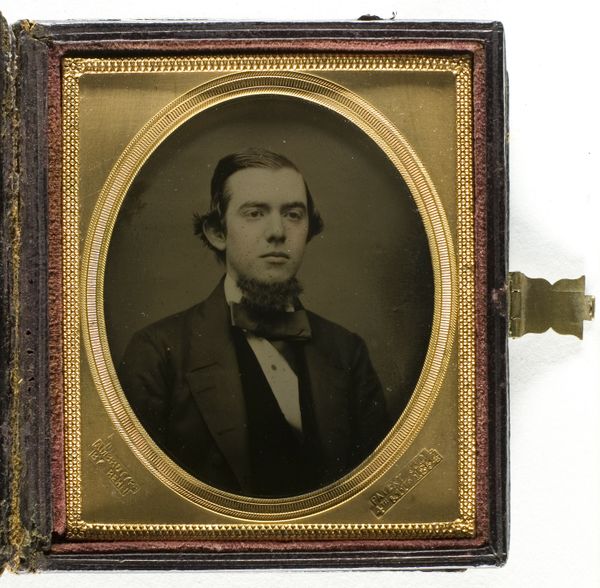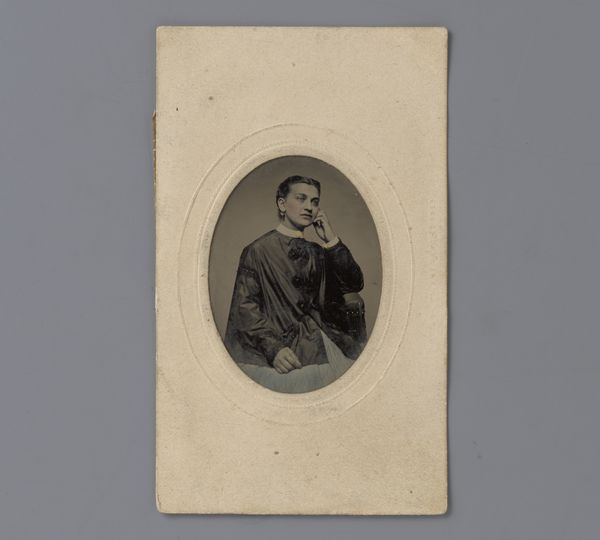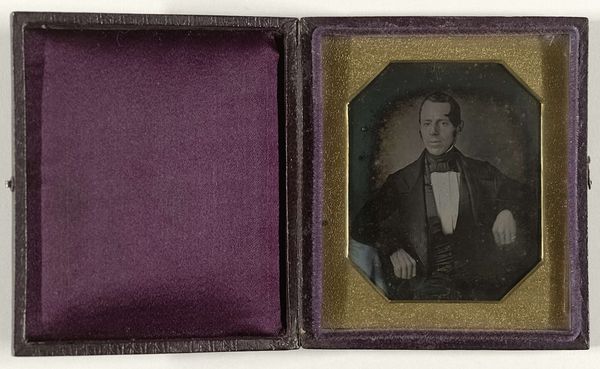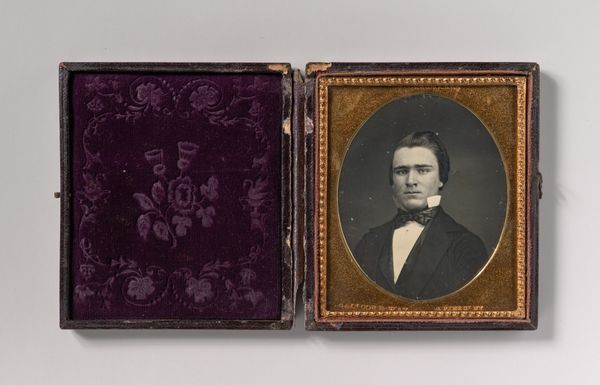
#
portrait
#
academic-art
#
miniature
#
watercolor
#
realism
Dimensions: image (visible): 12.8 × 9.6 cm (5 1/16 × 3 3/4 in.) mat: 15.1 × 12.6 cm (5 15/16 × 4 15/16 in.) framed: 25 × 22 cm (9 13/16 × 8 11/16 in.)
Copyright: National Gallery of Art: CC0 1.0
Curator: This watercolor miniature from 1856, titled "Portrait of a Man," immediately strikes me with its intimacy. There's a palpable sense of withheld emotion, wouldn't you agree? Editor: Absolutely. The tight framing contributes to this sense of quiet intensity. The gentleman’s gaze feels both direct and somehow… distant. I wonder, what messages about masculinity and class are embedded in this type of formal portraiture? The bow tie alone suggests a very specific construction of identity, doesn't it? Curator: It does. That meticulously tied bow is absolutely a visual signifier of societal expectations, perhaps even burdens of performance. And looking closer, the subject’s neatly trimmed sideburns also speak to the man's commitment to accepted fashions, perhaps even his social position, and expectations. I think about Foucault and the "technologies of the self" inherent in representations such as this. Editor: That's interesting because I am caught on his direct stare, which I am sure that was deliberately planned. As we know the eyes often have the most symbolic weight—windows to the soul, as it were—the artist creates a dynamic between revealing and concealing. And of course, he seems posed leaning on what might be a classical column, or perhaps simply a plinth of sorts. Do we know anything about this sitter? Curator: Sadly, no. His identity remains unknown. However, that absence of personal history allows us to engage critically with what is present. How might this image serve as a stand-in for, say, mid-19th century notions of patriarchy, or perhaps the aspirations—and limitations—of middle-class identity at the time? I am wondering if the miniature was perhaps intended to show that the gentleman was successful. The careful tailoring implies affluence but then again, maybe this gentleman came from an academic background. The world will never know, but what makes art great is exactly that. Editor: Agreed! By inviting this discourse, even speculative ones, these "unknown" subjects can embody universal, timeless messages about the complexity of life, and society overall. For all we know, this might be a portrait of a very famous man, who lived an entirely different persona in private than what was assumed about him publicly. Curator: Yes! It challenges us to question surfaces, and explore the undercurrents of societal conventions. Editor: I will certainly consider his narrative as it pertains to symbolic depictions of identity in general after this encounter.
Comments
No comments
Be the first to comment and join the conversation on the ultimate creative platform.


